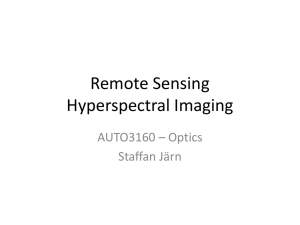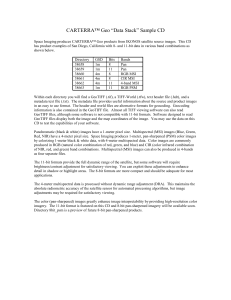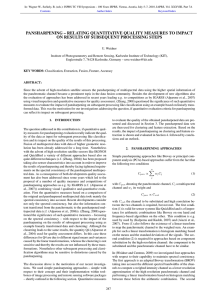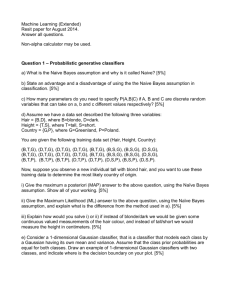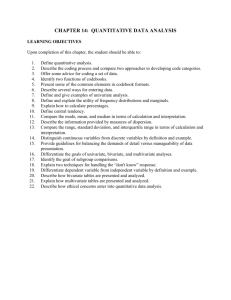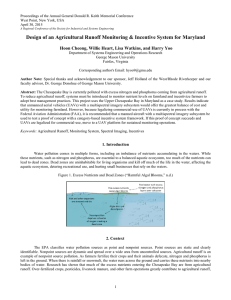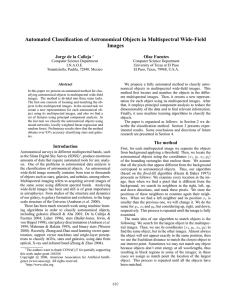DIP III (463)
advertisement
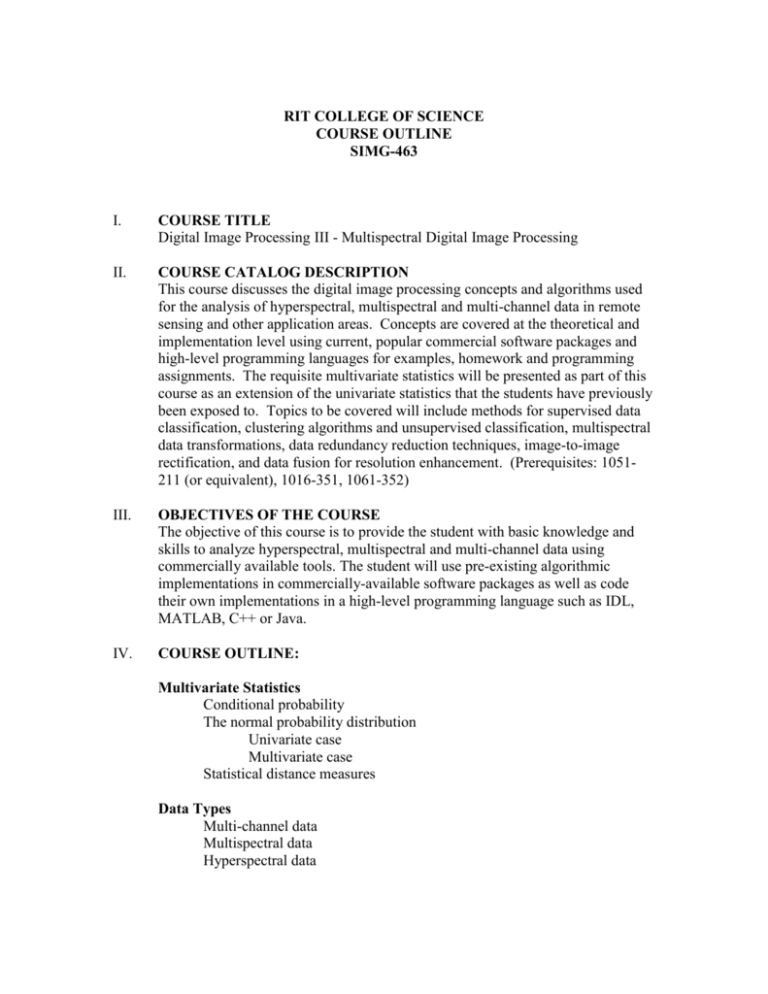
RIT COLLEGE OF SCIENCE COURSE OUTLINE SIMG-463 I. COURSE TITLE Digital Image Processing III - Multispectral Digital Image Processing II. COURSE CATALOG DESCRIPTION This course discusses the digital image processing concepts and algorithms used for the analysis of hyperspectral, multispectral and multi-channel data in remote sensing and other application areas. Concepts are covered at the theoretical and implementation level using current, popular commercial software packages and high-level programming languages for examples, homework and programming assignments. The requisite multivariate statistics will be presented as part of this course as an extension of the univariate statistics that the students have previously been exposed to. Topics to be covered will include methods for supervised data classification, clustering algorithms and unsupervised classification, multispectral data transformations, data redundancy reduction techniques, image-to-image rectification, and data fusion for resolution enhancement. (Prerequisites: 1051211 (or equivalent), 1016-351, 1061-352) III. OBJECTIVES OF THE COURSE The objective of this course is to provide the student with basic knowledge and skills to analyze hyperspectral, multispectral and multi-channel data using commercially available tools. The student will use pre-existing algorithmic implementations in commercially-available software packages as well as code their own implementations in a high-level programming language such as IDL, MATLAB, C++ or Java. IV. COURSE OUTLINE: Multivariate Statistics Conditional probability The normal probability distribution Univariate case Multivariate case Statistical distance measures Data Types Multi-channel data Multispectral data Hyperspectral data Supervised Data Classification Training Minimum distance to the mean classifiers Parallelepiped classifiers Maximum likelihood classifiers Bayesian assumptions Linear discriminant functions Mahalanobis distance Spectral angle mapper (SAM) Clustering and Unsupervised Classification Similarity metrics and clustering criteria Iterative clustering algorithms (migrating means) Seeding techniques K-Means ISODATA Merging, splitting and deleting classes Single pass techniques Multispectral Data Transformations/Data Redundancy Reduction Eigenvector transformations Principal components analysis Kauth-Thomas (KT) tasseled cap transformation Minimum Noise Fraction (MNF) Image-to-Image Rectification Multiple linear regression Ground control point (GCP) selection Mapping polynomials Analysis of variance and error characterization Data Fusion Multispectral resolution enhancement Using color transformations Radiometry preserving techniques V. INSTRUCTIONAL TECHNIQUES Classroom lectures, assigned reading, homework, and programming exercises VI. METHODS OF EVALUATION Homework and programming assignments, midterm exam, final exam VII. BIBLIOGRAPHY Richards, J.A and X. Jia, Remote Sensing Digital Image Analysis, An Introduction, 3rd Edition, Springer-Verlag, New York, 1999.
